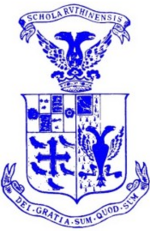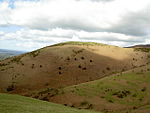Llanbedr Dyffryn Clwyd

Llanbedr Dyffryn Clwyd is a small village and community in Denbighshire in Wales, approximately 2 miles north-east of the town of Ruthin on the main A494 road towards Chester. There are several places called Llanbedr in Wales, as the word literally translates to 'church of St. Peter' in English. There are two churches called St Peter's in Llanbedr D.C. (as it is sometimes abbreviated to), the original medieval church of St. Peter and still stands as a Grade 2 listed ruin near Llanbedr Hall, and the present parish church of St. Peter, also Grade 2 listed, is alongside the A494 dedicated in 1864, part of the Deanery of Dyffryn Clwyd in the Diocese of St. Asaph.In 1831 the parish had a population of 527, a number which fell to 285 by the time of the 1901 census. In the 2011 census the population of Llanbedr was 787.
Excerpt from the Wikipedia article Llanbedr Dyffryn Clwyd (License: CC BY-SA 3.0, Authors, Images).Llanbedr Dyffryn Clwyd
A494,
Geographical coordinates (GPS) Address Nearby Places Show on map
Geographical coordinates (GPS)
| Latitude | Longitude |
|---|---|
| N 53.124 ° | E -3.28 ° |
Address
A494
LL15 1UP , Llanbedr Dyffryn Clwyd
Wales, United Kingdom
Open on Google Maps






